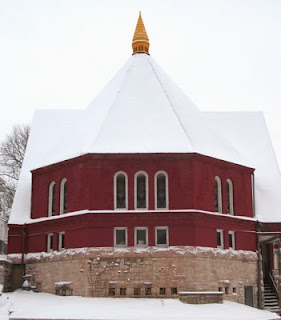I must have been a Victorian in my past life because I love to buy things, lots of beautiful things. I especially love to buy at auction and from auction sites such as eBay. eBay is a godsend availing anyone to a plethora of antiques and art at prices well below what retail or even wholesale markets offer.
So, Laura Hawkins House-Victorian Interior, what should this home look like?
We enthusiasts of the Victorian era know that interiors back then were opulent, to say the least. We know the Victorian era to be a materially extravagant one - a materialism triggered by the industrial revolution.
This revolution brought the means to manufacture goods quicker and cheaper with steam-powered machines. Wealth was being created in this country at an enormous rate (income tax was not yet a concept) and with it came new-found money and more affordable possessions. Hand-made items were replaced by machine-produced ones, and chemical dyes replaced natural pigments for fabrics and paint, making bright, rich colors commonplace. Decoration, which once was the domain of the rich, became available to the masses.

The Duffy-Trowbridge Stove Manufacturing Company
located on the "other side" of the tracks was the
largest stove manufacturing company in the midwest
around the turn of the century.
The factory supported hundreds of Hannibalian
and emcompassed nearly two city blocks.

From top to bottom are the Moulding Room,
the Sample Room and the Mounting Room in the stove factory.
But with the industrial revolution came filth. The massive increase in the number of factories and people migrating to cities in search of work resulted in major environmental and household pollution (and illness). The pollution came in the form of dirty smoke (from burning coal) from chimneys and factories. This smoke would block out light and cover streets and houses. In additon, many of the streets were dirt roads supporting mere planks along its outskirts for pedestrians to walk upon.

This was the Beggs-Goodson Wagon Factory, also located on
the "other side" of the tracks in Hannibal.
This leading Hannibal factory for farm and freight wagons
was established in 1901. The manufacturing center was
producing 3,000 wagons annually by 1905.
In reaction, the Victorians came to view the interiors of their homes as an escape from the filth outside. So, their new wealth was used to furnish interiors to make their homes a beautiful part of their lives. As the Victorian era progressed, interiors became more elaborate with another influencing factor - the rise of the British Empire. The colonization of India, Australia and Africa fueled an interest in oriental rugs, sensuous fabrics, brass accessories and tropical houseplants.
Armed with all this information, choosing interior décor for the Laura Hawkins house had become a fun part of this entire project. So let’s step back to the pre-Victorian era in the 1840’s when Laura was a girl ...
Back then, furnishings were rather plain. They were hand-made treasures passed on to subsequent generations. So, wouldn’t it make sense that the interior of Laura’s house be a combination of earlier family treasures and the Victorian grandeur of Laura’s later years?
Let’s start with the color scheme of the house. The house was built in 1897 and by then rooms (particularly more public rooms like the parlor) used rich jewel tones of blue, red, green and purple. Additionally, walls were adorned with oriental and floral-inspired wallpaper and floors (polished wood, of course) were adorned with richly patterned oriental rugs.
This turn of the century Anatolian carpet from Turkey
will grace the dining room floor of the Laura Hawkins house.

Antique Qom (city of Persia, now Iran) area rug.
To keep the “filthy” environment out of their private home lives (and to retain interior heat), Victorians layered their windows with dark heavy drapes. Ivory lace curtains were used to allow in natural light while keeping outdoor scenes out of view.
Damask Period Drapes...

This period pattern belongs to a set of drapes going into the house.
Accessories used in a Victorian home are what excites me the most. The Victorians surrounded themselves with personal treasures – photos adorned with ornate frames, souvenirs from foreign countries such as polished brass, peacock feathers and tropical plants in oriental urns, and ornate lamps...

Antique banquet parlor lamp.
For dining, Victorians set out the finest (most ostentatious) utensils and sets they could afford. These things were as much for show as for their intended use (in some cases, frivolous).

Antique Reposse Tea Service.
And of course, chandeliers were grand and highly decorative...

This turn of the century chandelier will grace the small dining room.
Victorians loved to collect paintings...
John Brown George painting. John George (1831-1913) was one of
19th-century America's most skilled and popular painters of children.
In some circles, he was dubbed the "Boot Black Raphael".
Victorians relished Renaissance style paintings.
Such was the "gilded age", as Twain so coined it in his novel of the same name and of whom he named a principle character "Laura Hawkins".
In contrast to the glorious public rooms, the less public rooms (kitchen, bathrooms, and bedrooms) were more ascetic with muted, creamy shades, and floors were often painted to match the trim.
We plan to add a feature of display in the Laura Hawkins house - the attic. With few exceptions (Anne Frank attic, for example), attics would not normally be a draw for your historical house enthusiast. Imagine this though ... Laura moved in with her son and family during her final years and wanted (no, demanded) to be surrounded by cherished treasures from her childhood and earlier adulthood. This was agreed to and many of the items were kept in the attic.
This "rustic" collection will populate the attic and not so public areas of the house. This will be the subject of my next post. For now, here are a couple of teasers...
I don't know who this is, but I loved that it is an ancestral portrait,
circa early-to-mid 1800's. This was an estate find from a seller in the
Kentucky-Tennessee area - the area from where Laura's family
migrated to Hannibal around 1840.
Ice skating on the Mississippi was a popular pasttime
in Laura's day. These ice skates made in 1850 would
have been similar to what Laura would have worn.


























































